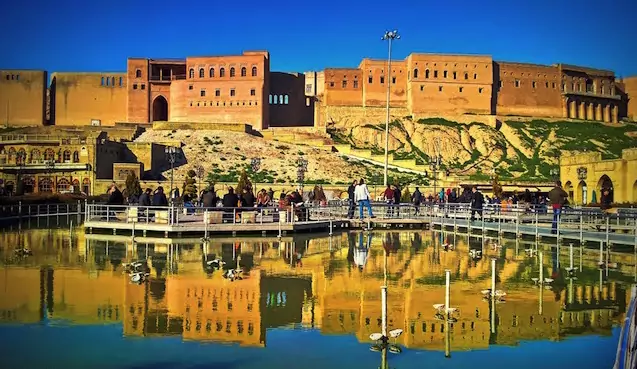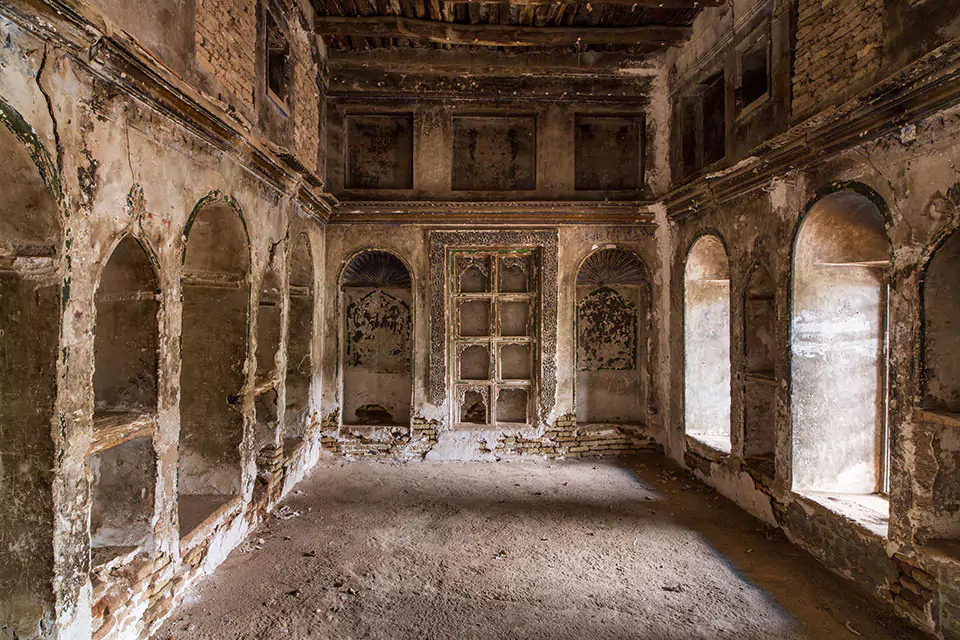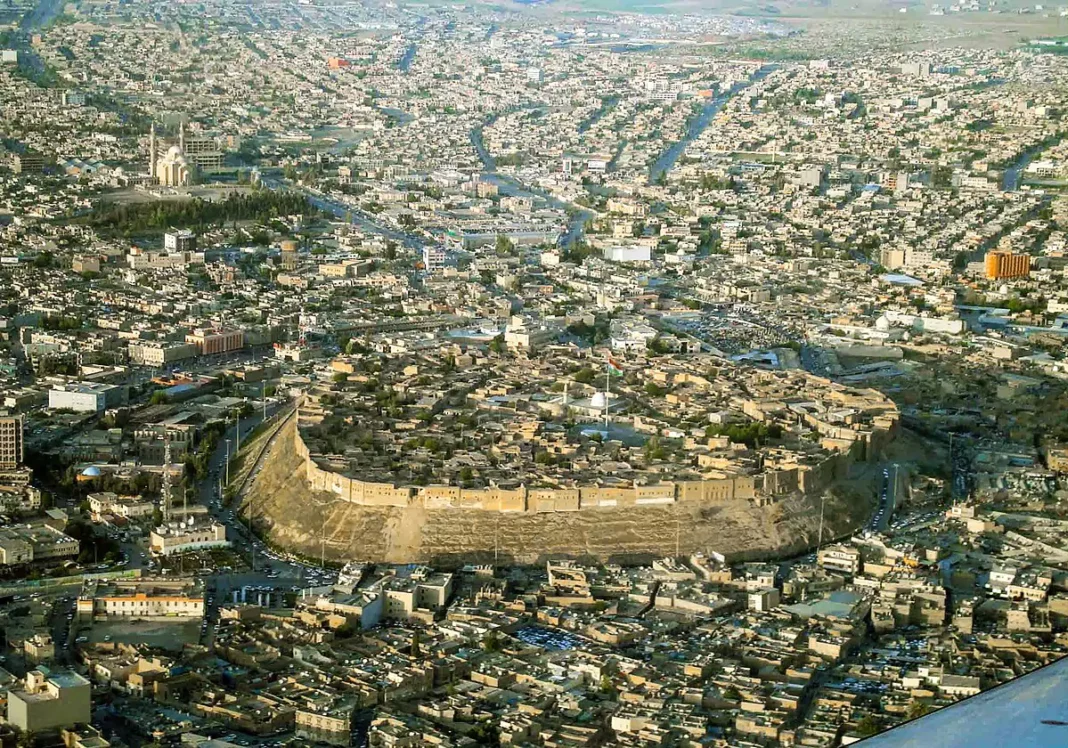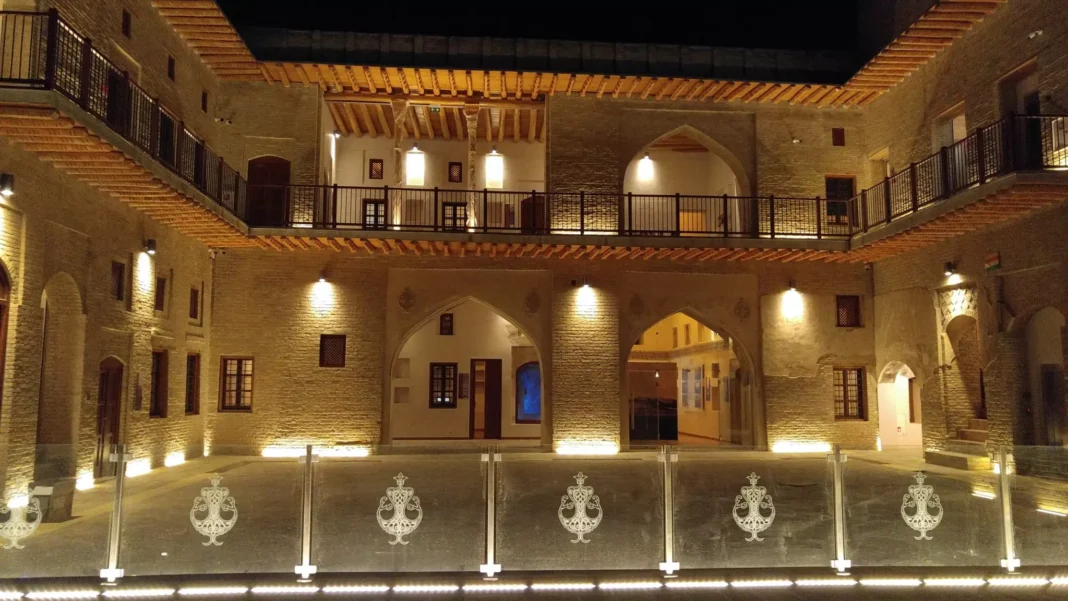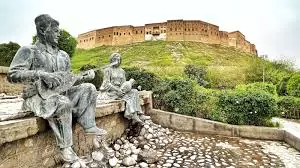Erbil Citadel, a captivating UNESCO World Heritage Site, stands as a testament to human history and resilience. Located in the bustling city of Erbil, the capital of the Kurdistan Region in Iraq, this ancient citadel has witnessed the rise and fall of empires, serving as a continuous settlement for over 8,000 years. Today, it offers visitors a unique opportunity to step back in time and explore the layers of history embedded within its walls.
Unveiling the History of Erbil Citadel
The origins of Erbil Citadel can be traced back to the Neolithic period, with evidence of human habitation dating back to 6000 BC. Over the millennia, the citadel has been ruled by various civilizations, including the Assyrians, Babylonians, Persians, Greeks, Romans, and Ottomans. Each empire left its mark on the citadel, contributing to its diverse architectural styles and cultural heritage.
The citadel’s strategic location on a tell (an artificial mound formed by successive layers of human occupation) made it an ideal defensive position and a center for trade and commerce. Its imposing walls, which once enclosed the entire city, have withstood the test of time and continue to protect the citadel’s historic core.
Exploring the Citadel Today
Today, Erbil Citadel is a vibrant cultural hub, home to a thriving community and a number of historical and cultural attractions. Visitors can wander through the citadel’s narrow alleyways, admire its traditional houses with their distinctive wind towers, and explore its ancient mosques and churches.
Key attractions within the citadel include:
- The Citadel Museum: This museum houses a collection of artifacts unearthed during archaeological excavations, providing insights into the citadel’s rich history and cultural heritage.
- The Grand Mosque: This historic mosque, with its elegant minaret and intricate decorations, is a testament to the citadel’s Islamic heritage.
- The Textile Museum: This museum showcases the rich textile traditions of the Kurdistan Region, with exhibits on traditional weaving techniques and intricate designs.
- The Kurdish Heritage Museum: This museum offers a glimpse into the culture and traditions of the Kurdish people, with exhibits on traditional costumes, music, and crafts.
Practical Information for Visiting Erbil Citadel
- Address: Erbil Citadel, Erbil, Kurdistan Region, Iraq
- Opening Hours: Typically open daily from 9:00 AM to 5:00 PM, but hours may vary.
- Contact Information: Contact the Erbil Citadel Tourist Information Center for the most up-to-date information.
Tips for Visitors:
- Dress modestly, especially when visiting religious sites.
- Be respectful of local customs and traditions.
- Bargaining is common in the local markets, so don’t be afraid to negotiate prices.
- Learn a few basic Kurdish phrases to enhance your experience.
Beyond the Citadel: Exploring Erbil
While Erbil Citadel is undoubtedly the city’s crown jewel, Erbil offers a wealth of other attractions for visitors to explore.
Nearby attractions include:
- Erbil Civilization Museum: This museum houses a vast collection of artifacts from various historical periods, showcasing the rich cultural heritage of the region.
- Sami Abdulrahman Park: This sprawling park offers a peaceful escape from the city bustle, with lush greenery, walking paths, and a lake.
- Qaysari Bazaar: This bustling market is a great place to experience local life and shop for souvenirs, spices, and traditional crafts.
- Jalil Khayat Mosque: This modern mosque is known for its stunning architecture and intricate calligraphy.
Navigating Erbil
- Transportation: Erbil International Airport (EBL) connects the city to international destinations. Within the city, taxis and buses are readily available.
- Currency Exchange: The local currency is the Iraqi dinar (IQD). Currency exchange services are available at banks and exchange bureaus.
- Cultural Etiquette: Kurds are known for their hospitality and warmth. It’s customary to greet people with a handshake and a smile.
Real-Life Experiences at Erbil Citadel
Many visitors have shared their unforgettable experiences at Erbil Citadel, praising its historical significance, cultural richness, and breathtaking views. One visitor described the citadel as “a living museum,” while another recounted the “warm hospitality” of the local people. These personal accounts highlight the unique charm and allure of this ancient wonder.
Delving Deeper into Erbil Citadel’s History
To truly appreciate the significance of Erbil Citadel, it’s essential to delve deeper into its fascinating history. Archaeological evidence suggests that the site has been continuously inhabited for over 8,000 years, making it one of the oldest continuously inhabited settlements in the world.
The Neolithic Period (6000-4500 BC)
The earliest evidence of human habitation at Erbil Citadel dates back to the Neolithic period. During this time, the inhabitants were primarily farmers and herders, living in simple mud-brick houses. Archaeological excavations have unearthed pottery, tools, and other artifacts from this period, providing valuable insights into the daily life of the citadel’s earliest inhabitants.
The Bronze Age (3000-1200 BC)
During the Bronze Age, Erbil Citadel became an important center for trade and commerce. The city’s strategic location on a major trade route between Mesopotamia and Anatolia facilitated its growth and prosperity. This period also saw the construction of the citadel’s first defensive walls, indicating its growing importance as a regional power.
The Assyrian Period (1200-600 BC)
The Assyrians, a powerful empire that dominated Mesopotamia for centuries, conquered Erbil in the 12th century BC. Under Assyrian rule, the citadel flourished as a major administrative and military center. The Assyrians expanded the citadel’s fortifications and built impressive palaces and temples within its walls.
The Babylonian and Persian Periods (600-330 BC)
Following the decline of the Assyrian Empire, Erbil came under the control of the Babylonians and then the Persians. During this period, the citadel continued to be an important regional center, although its political and economic influence diminished.
The Hellenistic Period (330-141 BC)
In the 4th century BC, Alexander the Great conquered the Persian Empire, bringing Erbil under Greek rule. The Hellenistic period saw the introduction of Greek culture and architecture to the citadel.
The Roman and Parthian Periods (141 BC – 224 AD)
After the death of Alexander the Great, his vast empire was divided among his generals. Erbil fell under the control of the Seleucid Empire, one of the successor states to Alexander’s empire. Later, the Parthians, a powerful Iranian dynasty, wrested control of the region from the Romans. The citadel continued to be a strategically important site during this era of shifting powers.
The Sassanian Period (224-651 AD)
The Sassanian Empire, another powerful Iranian dynasty, rose to prominence in the 3rd century AD. Under Sassanian rule, Erbil Citadel experienced a period of renewed prosperity. The Sassanians renovated the citadel’s fortifications and built new palaces and religious structures.
The Islamic Period (651 AD – present)
In the 7th century AD, the Arab armies conquered the Sassanian Empire, bringing Islam to the region. Erbil Citadel became an important center of Islamic learning and culture. The city thrived under the Abbasid Caliphate and later under various Kurdish dynasties. The Ottomans conquered Erbil in the 16th century, and the citadel remained under their control until the end of World War I.
Architectural Wonders of Erbil Citadel
The architecture of Erbil Citadel reflects its long and diverse history. The citadel’s buildings showcase a blend of architectural styles, from ancient Mesopotamian to Ottoman.
The Citadel Walls
The most striking feature of Erbil Citadel is its imposing walls. These massive fortifications, built and rebuilt over millennia, encircle the historic core of the citadel. The walls are made of mud-brick and are reinforced with towers and bastions. The main entrance to the citadel is through a grand gate, which is flanked by two towers.
Traditional Houses
Within the citadel walls, visitors can admire the traditional houses, many of which date back to the Ottoman period. These houses are typically two or three stories high and are built around a central courtyard. One of the most distinctive features of these houses is the wind tower, a traditional cooling system that captures the prevailing winds and directs them into the house.
Religious Buildings
Erbil Citadel is home to several historic mosques and churches. The Grand Mosque, located in the heart of the citadel, is one of the oldest and most important mosques in the city. The citadel also has a number of smaller mosques and shrines, as well as a historic church.
Erbil Citadel as a UNESCO World Heritage Site
In 2014, Erbil Citadel was inscribed on the UNESCO World Heritage List in recognition of its outstanding universal value. The citadel was recognized for its long and continuous history, its diverse cultural heritage, and its unique architectural features. The UNESCO inscription has helped to raise awareness of the citadel’s importance and has spurred efforts to preserve and protect this ancient wonder.
Preserving Erbil Citadel for Future Generations
Preserving Erbil Citadel for future generations is a top priority. The Kurdistan Regional Government, in collaboration with international organizations, has implemented a number of initiatives to conserve the citadel’s historic buildings and archaeological sites. These efforts include restoration projects, archaeological excavations, and community development programs.
Experiencing the Magic of Erbil Citadel
Visiting Erbil Citadel is a truly unforgettable experience. Walking through the citadel’s narrow alleyways, admiring its historic buildings, and interacting with its friendly residents offers a glimpse into a rich and vibrant culture that has thrived for millennia. Whether you are a history buff, an architecture enthusiast, or simply looking for a unique travel experience, Erbil Citadel is sure to leave a lasting impression.
Kurdish Phrases for Travelers
- Greetings
- Hello: Silav (Slaw)
- Good morning: Beyanî baş (Bayani bash)
- Good evening: Êvar baş (Ewar bash)
- Thank you: Spas (Spas)
- You’re welcome: Ser çavan (Ser chavan)
- Directions
- Where is…? : … Li ku ye? (… Li ku ye?)
- Left: Çep (Chep)
- Right: Rast (Rast)
- Straight ahead: Sererast (Sererast)
- Dining
- Delicious: Xweş e (Xwesh ay)
- The bill, please: Hesabekî, ji kerema xwe (Hesabeki, ji kerema xwa)
- Water: Av (Av)
- Emergencies
- Help!: Alîkarî! (Alikari!)
- I need a doctor: Ez hewceyê doktorekî me (Ez hewceyê doktoreki me)
- Police: Polîs (Polis)
- Shopping
- How much is this?: Ev çiqas e? (Ev chiqas ay?)
- Too expensive: Pir biha ye (Pir biha ye)
- I don’t want it: Ez naxwazim (Ez naxwazim)




